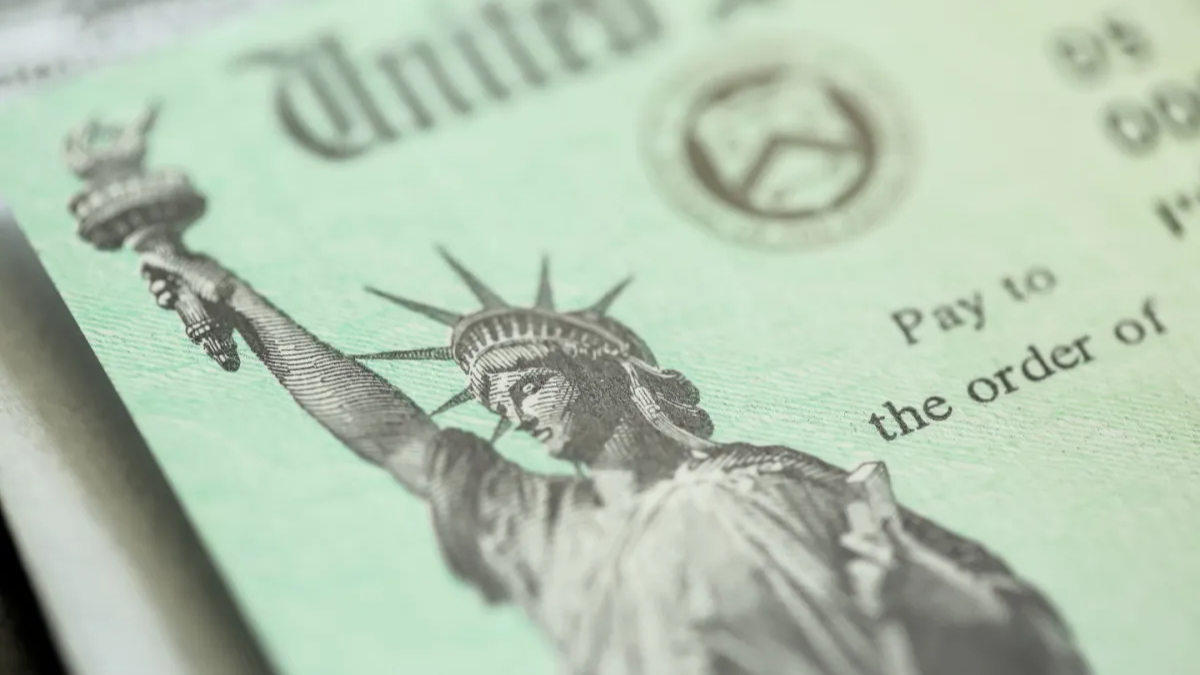A significant transformation in how Americans receive government payments is underway, with former President Donald Trump’s plan to eliminate paper checks gaining traction once again.
If current policies stay on course, paper checks for federal disbursements could disappear permanently by September 2025, marking a shift toward full electronic payment systems for Social Security, tax refunds, and other government-issued benefits.
The move is part of a broader federal effort to modernize government operations, increase efficiency, reduce fraud, and save taxpayers billions in processing and mailing costs.
While the transition to direct deposit and prepaid debit cards has been underway for years, the Trump-backed initiative now sets a firm timeline for ending paper-based disbursements for good.
The Push to Go Fully Digital
During his presidency, Trump advocated for modernizing outdated government systems and reducing bureaucratic inefficiencies. One major initiative included phasing out paper checks in favor of digital transactions.
This shift was overseen by the U.S. Department of the Treasury and accelerated during the COVID-19 pandemic when millions of stimulus payments were delayed due to paper processing issues.
The move toward eliminating paper checks is driven by several key goals:
- Cost Savings: Paper checks cost nearly $1 per issuance compared to less than 10 cents for direct deposit.
- Fraud Prevention: Digital payments are easier to track and protect against forgery or theft.
- Efficiency: Electronic transfers arrive faster, reducing wait times for beneficiaries.
- Environmental Benefits: Going digital significantly reduces paper waste and energy use in processing.
According to the U.S. Treasury’s Fiscal Service, the goal is to ensure that 98% or more of all federal payments are electronic by the September deadline.
Who Will Be Affected by the Elimination of Paper Checks?
The shift to digital payments will impact millions of Americans, particularly:
- Social Security and SSI recipients who still receive paper checks
- Federal retirees relying on mailed pension checks
- Taxpayers expecting IRS refunds by mail
- Veterans and survivors who receive VA benefit checks
While most federal payments are already made electronically, about 1 million Americans still receive paper checks. These individuals—often seniors, low-income households, or those in rural areas without stable internet—may face challenges transitioning to digital payments.
To help bridge the gap, the government will:
- Promote Go Direct®, a Treasury-sponsored campaign encouraging direct deposit
- Expand access to Direct Express® debit cards, especially for unbanked populations
- Provide in-person support through Social Security offices and community outreach

Concerns and Criticism
While the move to eliminate paper checks is praised by many economists and efficiency experts, not everyone supports the change. Critics argue that the policy may leave behind vulnerable groups who struggle with digital technology or lack access to traditional banking.
Common concerns include:
- Lack of internet access in rural or underserved areas
- Digital literacy issues among elderly Americans
- Increased risk of scams targeting recipients through fake emails or phishing texts
- Dependence on prepaid cards that can carry fees
Advocacy groups have called for exceptions or alternative solutions for individuals unable to receive payments digitally. Some suggest maintaining an opt-in option for paper checks for those with legitimate needs.
What Recipients Should Do Before September
With the September 2025 deadline approaching, Americans who still receive paper checks should begin preparing now to avoid disruptions.
Steps to take include:
- Set up a bank account if you don’t already have one.
- Enroll in direct deposit through the Go Direct website.
- Apply for a Direct Express® card if you’re unbanked or prefer prepaid options.
- Check with Social Security or the IRS to confirm your payment method.
- Attend digital banking workshops often offered at libraries, community centers, or senior homes.
Proactively transitioning to digital payments now can prevent delays or confusion once paper checks are officially discontinued.
A Lasting Legacy of Modernization
If this policy stays on track, eliminating paper checks by September will mark a permanent change in how federal agencies handle disbursements. Trump’s push for digital transformation continues to influence long-term government practices, streamlining bureaucracy while cutting unnecessary costs.
While the debate over digital equity continues, the move aligns with global trends toward contactless, secure, and fast payments. The days of waiting for a check in the mail may soon be a relic of the past.
For the latest updates and resources on federal payments, visit the U.S. Department of the Treasury’s Bureau of the Fiscal Service.
Disclaimer – Our team has carefully fact-checked this article to make sure it’s accurate and free from any misinformation. We’re dedicated to keeping our content honest and reliable for our readers.
